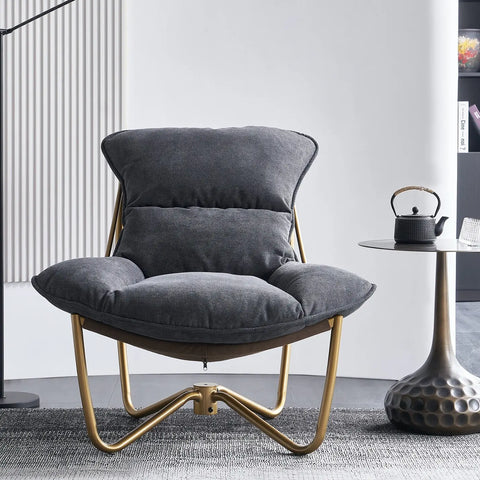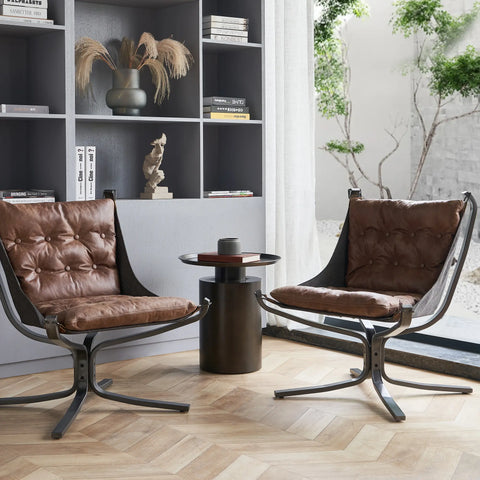Industrial Office Furniture: The Ultimate Guide to Choose It in 2023
Navigation
- What is industrial office furniture?
- The Importance of choosing high-quality Furniture
- Determining Your Needs
- Understanding Materials
- Choosing the Right Style
- Ergonomics and Comfort
- Maintenance and Durability
- Conclusion
What is industrial office furniture?
Industrial office furniture refers to functional and durable furniture designed for commercial office spaces. This type of furniture is typically constructed using heavy materials such as steel, wood, and metal alloys to withstand frequent and intensive use. Industrial office furniture includes essential workstation components such as desks, tables, shelves, filing cabinets, storage cabinets, and seating. This furniture is ideal for busy offices, open floor plans, co-working spaces, warehouses, and other locations with high-volume use. In 2023, industrial office furniture continues to evolve to meet the needs of modern work styles and workplace trends.

The Importance of choosing high-quality Furniture
When choosing industrial office furniture, quality should be a top priority. High-quality furniture is built to last longer, requires less frequent replacement, and limits downtime and costs associated with repairs or maintenance. Some key aspects of high-quality industrial furniture include:
- Durable and long-lasting materials: Items should be made of premium materials that can stand up to regular use and movement without damage. Steel, wood, laminate, and phenolic materials are excellent choices.
- Heavy-duty frames: Desks, tables, shelves, and other furniture with sturdy frames will not wobble, creak, or collapse under the weight. Thicker Steel tubes or wood joints indicate a solid frame.
- Secure joints: All connections between furniture parts should be tightly secured using mechanisms like bolts, rivets, or metal brackets to prevent loosening over time.
- High – impact resists surfaces: Wood, laminate and phenolic surfaces resist scratches, stains, and dents. They stand up better to impacts than traditional desktop materials.
- Rust/corrosion free: Metal parts especially should not rust, corrode or oxidize over time with regular use and cleaning. Powder-coated or electroplated metals help prevent damage.
- Longer warranty: A good warranty, typically 3-5 years, shows that the company stands behind the quality and durability of its furniture. Longer warranties mean less hassle and cost for you.
In summary, while industrial office furniture may have a higher upfront cost, investing in high-quality options will save time, money, and headaches in the long run. Quality is key to functionality, safety, and sustainability.
Determining Your Needs

To choose the best industrial office furniture for your needs, first determine how the furniture will be used. Some key questions to ask yourself include:
- How many people will be using the furniture? Furniture for large teams or open spaces differs from furniture for private offices or workstations.
- What types of tasks will be performed? Furniture for laboratory environments needs to withstand chemical exposure, while furniture for general office use requires durability and stability.
- What is the weight limit? Make sure shelves, desks, and tables can support the heaviest equipment or the maximum number of monitors, machinery parts, or office supplies that will be placed on them.
- What extras are required? Decide if you need features like cable management, built-in lighting, electrical outlets, microphone holes, etc.
- What is your budget? Set a maximum price limit to ensure you choose options that meet your key needs while staying within budget. Look for value and quality instead of just low upfront costs.
- Do you want flexibility? If needs may change frequently, modular and adaptable furniture components allow you to reconfigure layouts easily without shifting to an entirely new set of furniture.
- Environmental conditions: Consider factors like moisture, chemical exposure, extreme heat/cold, and UV light, which can damage furniture more quickly. Choose protective or specialized materials as needed.
Determining your true needs and must-have requirements upfront will help guide you to high-quality, durable industrial furniture solutions that will serve you well for years to come while fitting your budget and workspace perfectly. With a clear set of needs in mind, you will find value in the furniture instead of just chasing the lowest price.

Understanding Materials
A wide range of materials is used in industrial office furniture, each with unique properties to consider for your needs. Some common materials include:
- Steel is extremely durable, strong, and resistant to damage. It is often used for table bases, desk frames, and structural components. Steel furniture lasts decades and stands up to heavy use. However, steel can be cold, not very stylish, and may require coatings to protect from scratches, dents, or rust.
- Wood, especially hardwoods like maple, birch, and pecan, offers spaces warmth, beauty, and style. Wood furniture looks high-end but requires more maintenance as it can dent, scratch, stain, and warp more easily than other materials. Protective treatments help preserve wood for longer. Wood is a solid, sustainable material choice.
- Laminate is a durable synthetic material made from compressed layers of paper and plastic. It provides an attractive, scratch and stain-resistant surface for tables, benches, shelving, and countertops. Laminate withstands high-impact use while mimicking the look of wood, stone, or other surfaces. However, edges may start to delaminate over time with extensive use.
- Phenolic resin materials are thermosetting plastics that create minimal warping, denting, or peeling. They are often used as tabletops, shelving, cabinet tops, and wall panels in factories, warehouses, and industrial spaces. Phenolic resins have high flame resistance, and chemical resistance and are seamless and hygienic. However, the material may not breathe or become diffuse over time.
- Mesh fabric and vinyl upholstery provide breathable, wipe-down-ready, and comfortable seating options for office chairs or stools. The open weave fabric or vinyl material prevents heat build-up and perspiration while being very hardy and long-lasting. These materials handle high-volume use exceedingly well while reducing discomfort on warmer days or for longer sitting times.
Overall, choose materials consciously based on intended use, key priorities, style needs, and budget. Protect all materials through proper maintenance and high-quality care to maximize longevity. Material selection significantly impacts how well furniture functions, attracts occupants and serves your space for years beyond the initial purchase.

Choosing the Right Style
Once you know what types of features and capabilities you require, you can evaluate the different furniture styles available. Common styles of industrial office furniture include:
- Mid-century modern: Simple, minimalistic style with sleek lines, metal frames, and neutral tones. Great for open-concept spaces with a modern aesthetic.
- Vintage/loft: Distressed wood, metal reclaimed materials, and rustic steel combined for a reclaimed warehouse appeal. Perfect for creative office spaces.
- Contemporary: Sleek, streamlined style using minimal frames with steel or wood and highly polished surfaces. A more budget-friendly, versatile style is suitable for almost any space.
- Eclectic: Combines multiple styles and materials like wood, metal, and laminate for visual interest. Allows you to mix new and secondhand or reclaimed furniture. Championed by many coworking spaces.
- Ergonomic: Designed to support best practices for seated positions, worksurface heights, and traffic flow. Help keep occupants comfortable and productive and prevent injury or strain.
- Modular: Furniture can be arranged in multiple configurations, and rearrangements are simple to make. Moveable walls, tables, and seating provide flexibility. Many are configurable for short-term needs as well.
In addition to style, consider layout options like stationary tables vs. nesting tables, private offices vs. open workbenches, individual desks vs. desk rows or office islands, etc. Think about sightlines, navigation, and how people interact and collaborate in the space. Choose a style that aligns with your brand and company culture, as the furniture ends up becoming an extension of that. With the right style and configuration options, you can craft a workspace layout as unique as your business.
In summary, there are many possibilities for industrial office furniture styles to suit any need or personal preference. Be sure to consider all factors before making your final selections. The right furniture style and high-quality, durable components will make for a workspace you and your team love for years to come.
Ergonomics and Comfort
While Industrial Office Furniture is meant to be highly functional, ergonomics and comfort should not be overlooked. Several key areas impact how comfortable and productive employees remain in their workspaces:
- Seating: High-quality office chairs provide lumbar support, adjustability, breathability, and padding for longer sit times. Standing desks are also an option, but an anti-fatigue mat is still recommended.
- Worksurface: Desks, tables, workbenches, and counters should have an adjustable height for proper knee-elbow-wrist alignment. Surfaces remain somewhat shallow, around 24-30 inches deep. Monitor arms allow setting the keyboard and mouse at optimal distances from the user.
- Footrests: Provide footrests or foot rails for support. This prevents legs from dangling and reduces strain on the lower legs and knees. Footrests also provide stability against shifting.
- Task lighting: Adequate overhead lighting as well as directed task lighting, ensures clear visibility of screens and work areas. Dimmer controls allow customizing ideal lighting levels for different tasks.
- Shelving: Shelves provide vertical space for materials and support comfortable armrests or keyboard/mouse trays at worksurfaces. Adjustable shelving allows flexibility based on height needs.
- Cable management: Cord reels, cord raceways, cord covers, or cord grommets help keep monitor cables, desk cords, phone cords, and other plugs and cables organized and tripped avoided under furniture where cords would normally stretch across walkways.
- Lockers: If needed for equipment, lockers provide secure storage and protect sensitive items. Lockers help avoid trip hazards and keep areas around workspaces clear.
- Accessibility: Consider special needs with furniture like adjustable beds or tables for wheelchair users, braille labels, radio frequency identification tags for locating misplaced items, or accessories that convert standard furniture.
A focus on ergonomics and building comfort features in your industrial furniture selections will boost productivity, reduce injury or illness, increase employee satisfaction, and create a space people truly enjoy coming to work in each day. Keeping musculoskeletal health and prolonged productivity in mind leads to smarter furniture choices.
Maintenance and Durability
On top of meeting your space's style, functionality, and comfort needs, Industrial Office Furniture must stand the test of time through frequent use and various conditions. Regular maintenance and a focus on durability will keep furniture operating at its best for longer. Some important things to keep in mind include:
- High-quality, heavy-duty materials: Steel, wood, laminate, phenolic resins, and similar materials resist damage and last longer than less durable options. Powder coat finishes provide scratch and stain resistance.
- Secure fasteners: Ensure all legs, bolts, joints, and connections are tightly fastened with lock washers or other anti-strip metal treatments to prevent loosening over time and use. Well-attached bolts mean steady, stable furniture.
- Abrasion-resistant surfaces: Surfaces may encounter pen marks, scratches from equipment movement, and general wear and tear. Choose materials with built-in scratch, impact, and stain resistance properties or apply protective laminates or edge banding for prevention.
- Moisture resistance: Some spaces may encounter spills, splatters, or general messes. Attempt to choose furniture with sealed surfaces and joints or apply protective sealers for easy wipe-down cleaning and stain resistance.
- Upholstered pads: For some chairs, applying the reflective tape, gel pads, or ding guards to the feet prevents damage to floors when dragging or scooting chairs around. Casters also alleviate the concern of damage from sliding furniture feet.
- Protective coatings: For wood furniture, apply water resistance, UV inhibitors, and scratch-resistant topcoats. Reapply coatings every few years based on usage levels and environmental conditions to maintain protection.
- Regular cleaning: Establish a routine for frequently dusting, vacuuming, wiping down, and spot-cleaning furniture, especially high-traffic areas and equipment surfaces. Proper cleaning prevents built-up dirt and maintains an attractive, cared-for appearance.
- Minor repairs: Address small issues promptly through touch-up paint, re-tightening bolts, or minor repairs to prevent further damage. For larger repairs or damage, utilize a professional furniture repair service to restore components and ensure components remain securely attached.
With high-quality, durable materials, regular maintenance, preventive protections like pads and coatings, and prompt attention to any issues, you can keep industrial office furniture functioning effectively for many years. By following best practices for durability and care, you gain value through longevity.
Conclusion
This guide has provided recommendations and best practices for choosing high-quality industrial office furniture that meets all essential needs while enhancing workplace style and productivity through comfortable, durable solutions built to last. By following these guidelines, you end up with furniture ideal for years of frequent and intensive use. With the right furniture in place, focus can remain on the meaningful work being done rather than coworker discomfort or frustration. Should you have any interest in Industrial Office Furniture, please refer to Go to way2furn website for more information.






















